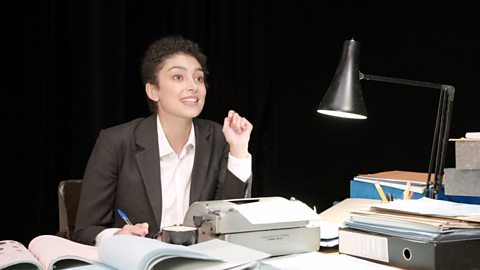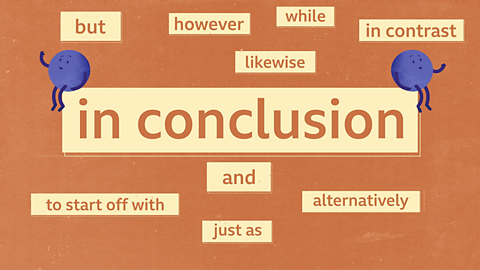Did you know?
The longest speech ever recorded in the UK Parliament was delivered in the House of Commons in 1828 and lasted for six hours!
Introduction to how to write a speech
Speeches are a powerful way of expressing your ideas to others.
When writing a speech, you need to think carefully about how you structure it to make sure it is easy for listeners to follow.
In order for it to be engaging, you need to consider the language you use, ensuring that you target your audience and their interests. In fact, there are a range of language techniques that can help to make your speech even more powerful.
Video on how to write a speech
Find out how to write a speech
What is a speech?
A speech is a formal talk given to an audience. It has an aim and purpose â often to either inform and/or persuade, although itâs important to remember that some have other intentions too, eg to entertain.
Speeches are used in many different contexts. A bride or groom may give a speech at their wedding. A politician or activist may give a speech to inform others of the need for change, and persuade them of the right way to bring it about. A manager may need to give a speech to their employees or bosses. A speech may even be given when you leave school to reflect upon your time in education and inspire others to look to the future.
Speeches are not necessarily something we do every day, but speech writing is a useful skill to have.

What is the most common purpose of a speech?
a) To inform and/or persuade
b) To entertain and/or amuse
c) To advise and/or describe
Answer: a) To inform and/or persuade
Famous speeches
Throughout history, speeches have had a massive impact on social change and political decisions. Famous speeches that are credited as having helped change the world include:
âI Have a Dreamâ by Martin Luther King Jr in 1963. It was given as part of the USA Civil Rights movement in order to help bring about racial equality.
âWe shall fight on the beachesâ by Winston Churchill in 1940. It was a speech delivered to MPs in the UK House of Commons, encouraging the nation to rise to the challenges of World War Two and not to give up hope of victory.
âI am prepared to dieâ by Nelson Mandela in 1964, given as part of the fight to end apartheid and bring about a free and equal society for both black and white people in South Africa.
âFreedom or Deathâ by Emmeline Pankhurst in 1913 was a speech given as part of the fight for womenâs right to vote.
In more recent times, we have seen a number of celebrities give speeches on a range of social, political and environmental issues. For instance:
Emma Watsonâs âHeForSheâ speech given at the United Nations Headquarters as part of the UN campaign to end global gender inequality.
Leonardo DiCaprioâs speech on climate change at the opening of the 2014 UN Climate Summit.
There are also wide ranging TED Talks that are now available on almost any topic imaginable that have gone on to inform, persuade and inspire others around the world.

What issues do you think speeches most commonly given about?
a) Personal and family issues
b) Social and political issues
c) Financial issues
Answer: b) Social and political issues.
How to structure a speech
The opening
Start with an opening that hooks your audience before making the overall topic of your speech clear. Get their attention and prepare them to focus on the words that will follow. For example, you could use:
- A powerful image: âImagine a huge clock - the slow, steady tick filling this room. Counting away the seconds and minutes we have left to act.â
- A shocking or surprising fact: âRecently, I found out that up to one million species of plants and animals are threatened with extinction at this very moment.â
- A rhetorical question: âWho wouldn't want to be a millionaire?â
Think carefully about how you want your audience to feel. A shocking fact may work well for some topics or audiences but a powerful image, for instance, may be more appropriate for others.
The main body of your speech
Having a simple structure to the main part of your speech is important to help the audience follow your points and ideas. Think about which points are more important and focus on reinforcing them. It is a good idea to put the most important points near the beginning of the speech, making sure they are in a logical order. Include the most important supporting examples and facts, but donât overload the speech with too much detail.

Which sentence is the 'hook' in this paragraph?
Did you know that women make up more than two-thirds of the world's 796 million illiterate people? This means that the majority of the women in the world still cannot read or write to a functioning level. As a consequence of this, many women can only get low-paying jobs (if they are employed at all), meaning that, globally, there are a higher percentage of women who are suffering from poverty and starvation.
The rhetorical question 'Did you know that women make up more than two-thirds of the world's 796 million illiterate people?' is the hook in this paragraph. It asks the reader or listener a question that gets them thinking and wanting to know more.
Engaging language techniques
Think carefully about your audience. Choose language that will engage your specific listeners. A speech to a group of teenagers may use very different language compared to a speech given to a group of local politicians.
Think about the purpose of your speech. Are you hoping to persuade, inform, advise, entertain or argue? Many speeches will have more than one purpose. Ensure that you remain focussed on the purpose(s) you are trying to achieve.
There are a number of language techniques and rhetorical devices which can be used to keep listeners engaged during a speech and make points memorable. For example:
- Tricolon (also known as Rule of Three or Triples): Three words or phrases in a row within a sentence to emphasise a positive or negative point.
- Hyperbole: Exaggerated statements or claims for emphasis.
- Emotive language: Words and phrases deliberately and intentionally used to make your reader feel certain emotions (eg sadness, worry, urgency etc).
- Expert quote: A quotation taken from an expert in the topic about which you are speaking and which supports the point you are making, giving it more authority.
- Imperative: A command or direct instruction.
- Rhetorical question: A question asked for effect without the expectation of an answer.
- Repetition: A key word or phrase said more than once in order to reinforce a point.
- Statistic: A set of figures or a percentage used to demonstrate a point, giving it more authority.
Powerful conclusions
It can be useful to include phrases directed at the audience that highlight youâre ending the speech:
- âI hope these ideas Iâve shared today will fill your thoughts on the way home. It is important that weâŠâ
- âMy final message to you isâŠâ
- âIn conclusion, it is clear thatâŠâ
Or you may want to finish your speech with a powerful image, question or memorable idea:
- âYou hold our fragile future in your hands â donât break it.â
- âDo we really want to be responsible for the destruction of our environment?â
- âWhen all is said and done, will you have said more than you have done?â
And finallyâŠ
Donât forget to thank your audience for giving you their time!
- âThank you all for listening today.â

Which part of the following paragraph that clearly signals this is the ending of the speech to the audience?
The point of no return regarding climate change is just around the corner. It is time for us to act before it is too late. As you leave here today, leave with at least one idea regarding how you can cut your carbon emissions and put it into practice. You can make a difference. Together, we can be the difference.
Answer: As you leave here today, leave with at least one idea regarding how you can cut your carbon emissions and put it into practice.
Key points
An effective speech takes careful planning. Even the most powerful politicians who seem to be speaking spontaneously may have spent a lot of time preparing what to say. What you say, the order in which you say it, and the techniques you use to get your points across will all add impact to your speech.
Focus onâ¯what you want the audience to knowâ¯andâ¯how you want them to feelâ¯at the end of the speech.
Test your knowledge
Play Bitesize secondary games. gamePlay Bitesize secondary games
Have fun playing science, maths, history, geography and language games.

More on Non-fiction writing
Find out more by working through a topic
- count10 of 10

- count1 of 10

- count2 of 10

- count3 of 10
